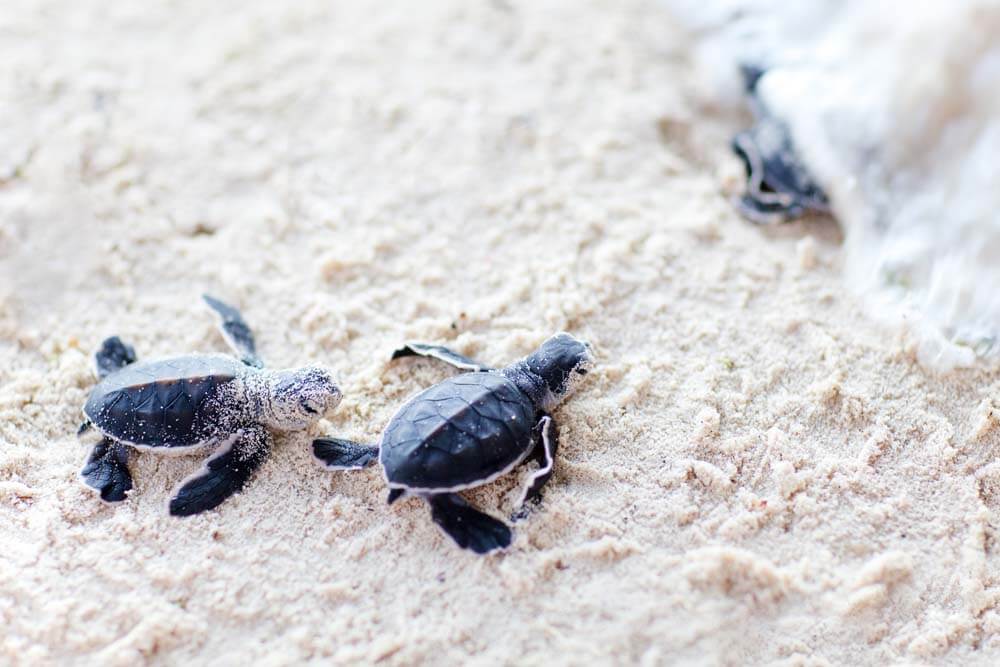
A new study from the University of Exeter has found that the green turtle population of Seychelles has recovered substantially following extensive conservation work to protect the species.
The turtle population of Aldabra Atoll was hunted to the point of extinction before a hunting ban was established in 1968, along with measures to track the number of eggs laid on Seychelles beaches. From an estimated 2,000 – 3,000 clutches laid in the last years of the 1960s, the figure has risen to more than 15,000 clutches of eggs laid in 2019, making it one of the largest known populations of green turtles in the region.
The results of the study indicate that the green turtle nests around Aldabra Atoll have grown by an average of 2.6 per cent each year in the last half-century. The greatest growth in numbers was recorded at Settlement Beach on Picard Island, the third largest of the Aldabra group of islands, and where the greatest exploitation of nesting females took place.
Green turtles (Chelonia mydas) are listed as globally Endangered, mostly due to historical overhunting of the species and its eggs. Green turtles were a valuable source of meat, their skin was tanned to use as a form of leather, and their eggs were considered a delicacy in many locations. Green turtles are slow to reproduce, only reaching sexual maturity at an estimated 26 to 40 years of age, and although each clutch of eggs can contain up to 200 eggs, it is thought that only one per cent of the eggs laid during a nesting period will survive long enough to reproduce.
‘Green turtles have suffered massive historical population declines due to intensive harvesting of nesting females,’ said the study’s lead author Adam Pritchard, from the Centre for Ecology and Conservation at the University of Exeter’s College of Life and Environmental Sciences. ‘Aldabra Atoll was the first green turtle nesting site to be protected in the Western Indian Ocean, with a ban on turtle capture in 1968, followed by continued long-term monitoring by Seychelles Islands Foundation researchers.’
Green turtles are not the only reptile that the conservationists of Aldabra have helped to preserve. Seychelles was once home to several species of giant tortoise, which were wiped out by early French colonists of the island nation. A successful breeding program has reintroduced the Aldabra giant tortoise to the islands of Seychelles.

The success of the long-term conservation efforts has been applauded, with scientists calling on similar projects to be more widely recognised.
Professor Brendan Godley, who helped supervise the Exeter University research, said that it had been ‘an honour’ to support the work of Seychelles’ conservation efforts over the past 50 years. ‘The ongoing population increase of Aldabra’s green turtles is testament to long-term protection,’ said Prof Godley, ‘and offers some clear evidence of the fact that we can be optimistic about marine conservation, well enacted.’
‘This study demonstrates the importance of long-term monitoring, which is often seen as less glamorous and valuable than targeted research,’ said Cheryl Sanchez, a researcher at the Seychelles Islands Foundation and co-author of the study. ‘It has taken decades of tireless commitment to collect the data to confirm this increase and the foresight to protect the nesting population before it was too late.’
The complete study ‘Green turtle population recovery at Aldabra Atoll continues after 50 yr of protection’ is published under an Open Access license by the journal Inter-Research Science Publisher.


